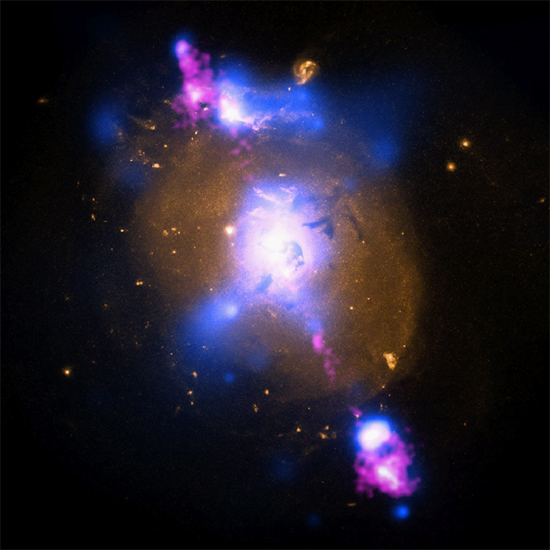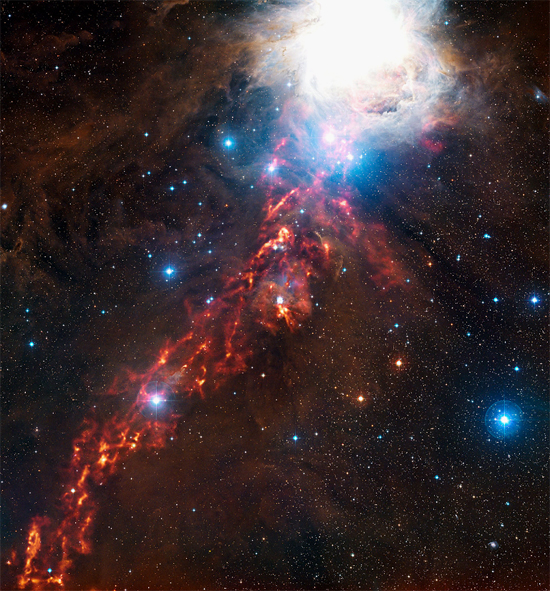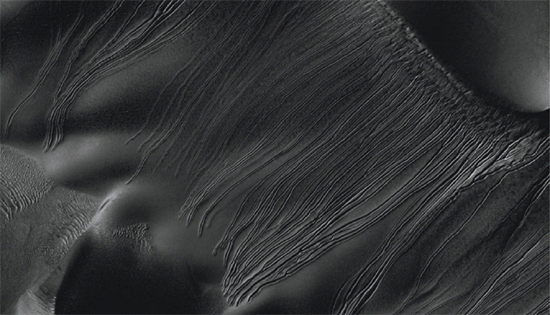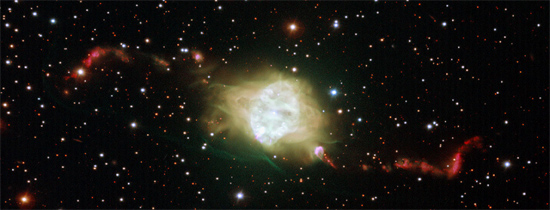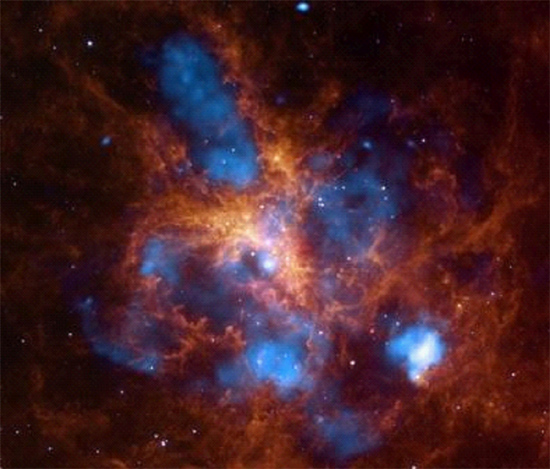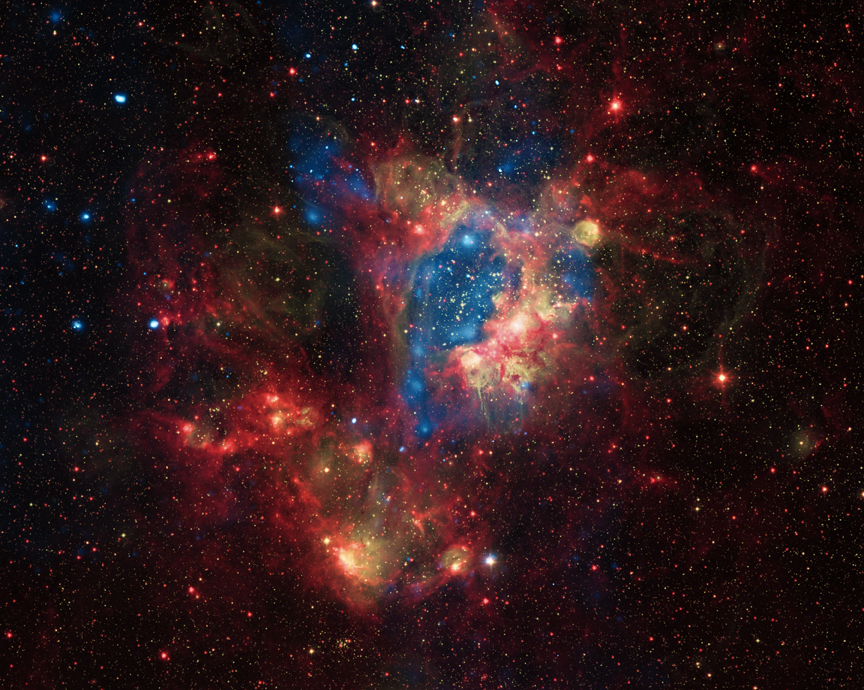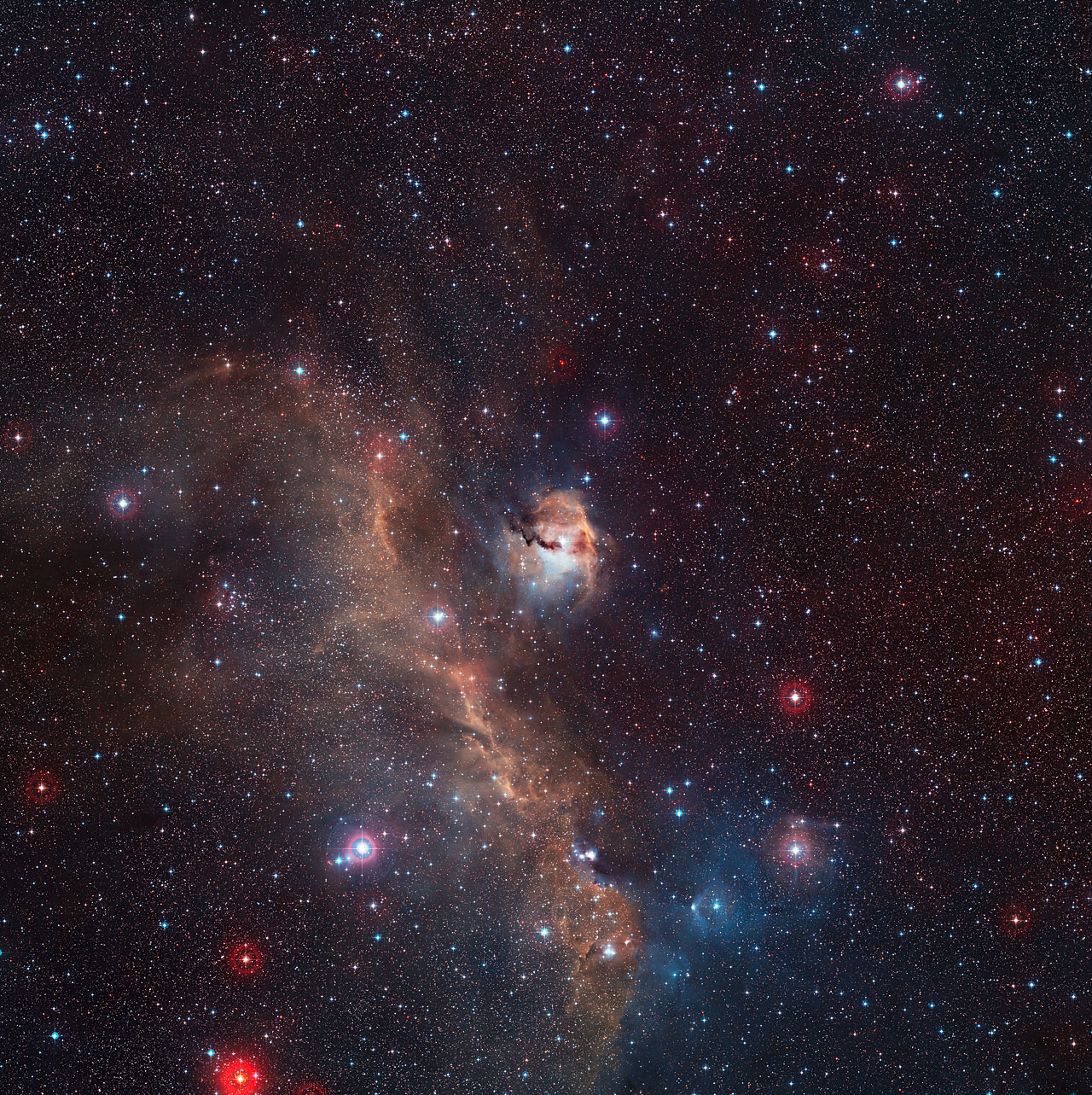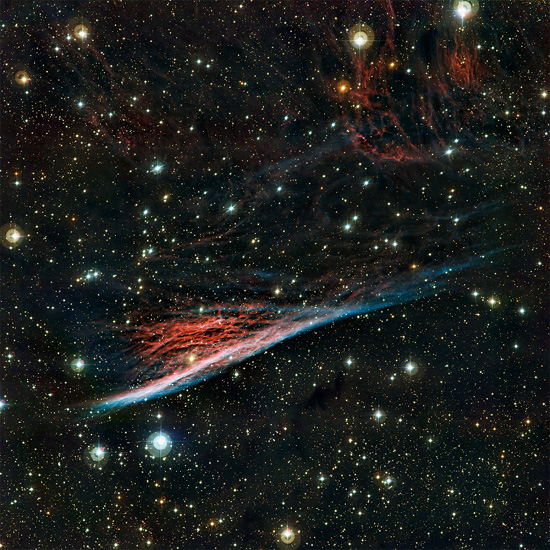Super Exploding Double Layer
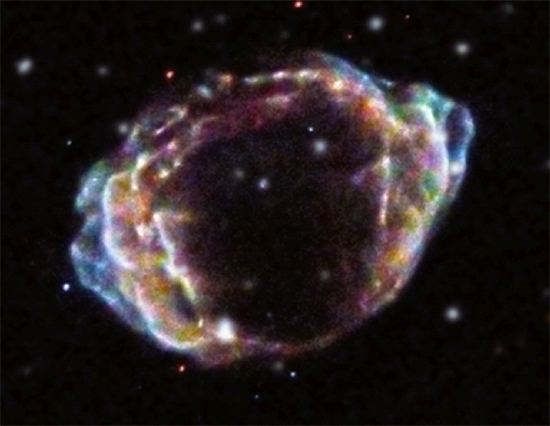
Jul 05, 2013 NASA’s Chandra X-ray Observatory recently discovered this object, which the dusty plasma near the center of the Milky Way obscures in optical light. X-rays penetrate the dust: low-energy signals are red, intermediate-energy signals are green, and high-energy signals are blue. The white dots are stars from the…





